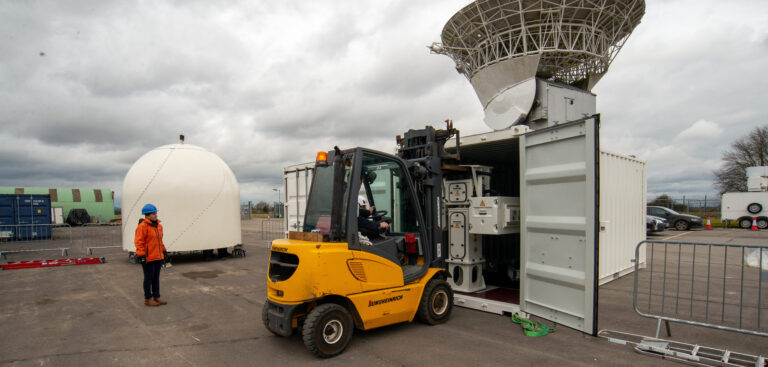The UK’s National Centre for Atmospheric Science (NCAS) has installed a new moveable dual-polarized X-band weather radar at its Chilbolton Atmospheric Observatory, Hampshire.
Financed by the UK Research and Innovation World Class Laboratories Fund, the new specialized weather radar will help researchers to study clouds and different types of precipitation on fieldwork campaigns worldwide, and lead to improved weather forecasts and climate projections.
NXPol-2 operates at X-band frequency, which is a shorter wavelength suitable for close-range observations of clouds within 150km. It’s dual-polarization capabilities also enable both the size and shape of particles to be determined. According to NCAS, it is the only mobile weather radar in the UK.
Dr Ryan Neely III, radar team leader and associate professor – observational atmospheric science, NCAS and University of Leeds, said, “One of NXPol-2 unique strengths lies in its portability, which means it can collect highly detailed information in regions where stationary radar cannot reach, or cannot be permanently installed. Initially, we have installed the radar at Chilbolton Atmospheric Observatory, where researchers can calibrate and compare their measurements alongside a suite of atmospheric instruments, including one of the world’s largest steerable weather radars.”
The radar unit has been installed on a shipping container and can be deployed almost anywhere in the world to support scientists. Inside the shipping container, researchers have set-up a workspace that can be transported with the radar.
NCAS has previously deployed a radar mounted on a trailer (NXPol-1) on successful science campaigns, including a 12-month stint on the Lake District coastline to help improve flood forecasting and warning services in the region.
The new radar has already been lined up to support several upcoming fieldwork projects including a Met Office program to improve the prediction of convective storms, taking place in southern England this summer. There are also field deployments planned in both Europe and Antarctica.
Unlike the previous radar unit, the new model has been equipped with a radome enabling it to operate during high winds. Access to the radar, under cover of the radome, can now be made via a trapdoor inside the shipping container.
Dr Lindsay Bennett, a radar instrument scientist at NCAS and University of Leeds, said, “We’ve had years of experience with our previous X-band radar, and we’ve used our experiences to design a more robust system for our new radar. We can deploy the NXPol-2 in even harsher environments than before, which allows us to support science worldwide and in remote areas.”



